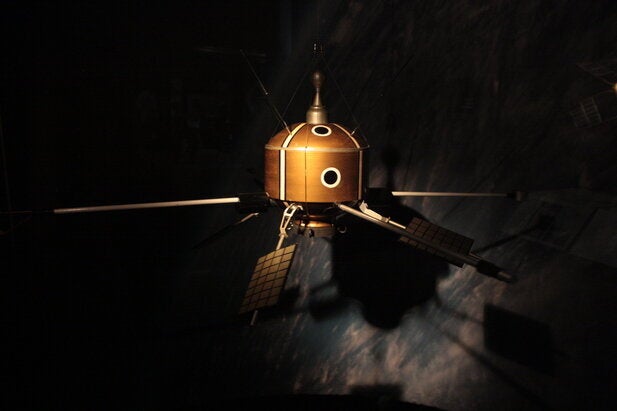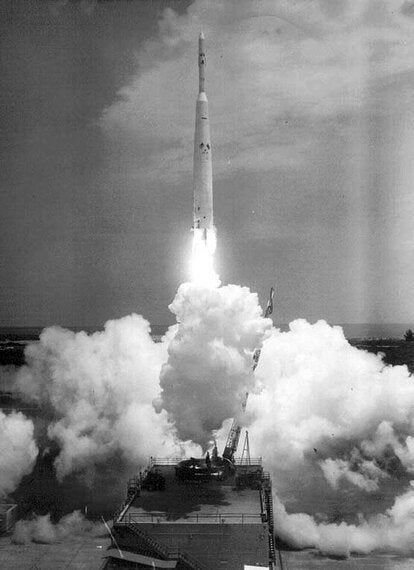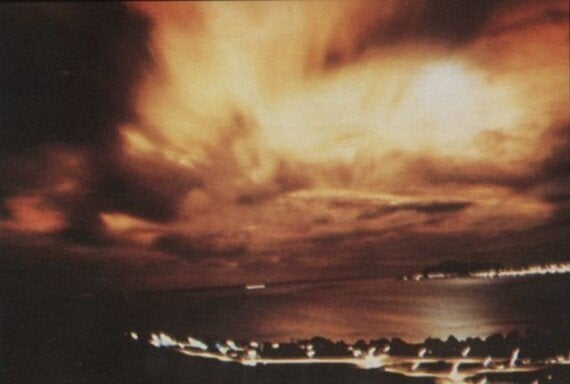With Major Tim Peake due in December 2015 to become the first British astronaut funded by government, I wrote a feature about the UK's history in space for BBC Sky at Night magazine.
Most people I knew laughed when I said I was writing it - "oh that won't be long then!" was a common cry. But the UK has been a leading player in space exploration since 1952... and just because we haven't had a manned space programme doesn't mean to say we haven't been active.
In fact, the United Kingdom was the third country in the world to operate a satellite - with the launch of Ariel-1 in 1962.

"Ariel 1 satellite, London Science Museum" by Stephencdickson - Own work. Licensed under CC BY-SA 4.0 via Commons - https://commons.wikimedia.org/wiki/File:Ariel_1_satellite,_London_Science_Museum.JPG#/media/File:Ariel_1_satellite,_London_Science_Museum.JPG
The US were keen to work with their allies to launch experiments on their satellites, and Ariel-1 was the first such collaboration. Nasa would provide the rocket and build the satellite, and the experiments on board were developed by the Science Research Council, the UK's agency charged at the time with responsibility for space research. In all, six scientific instruments were supplied by the UK for the satellite, designed to investigate the relationship between the ionosphere, cosmic and solar rays.

"Thor Delta with Ariel 1 (Apr. 26, 1962)". Licensed under Public Domain via Commons - https://commons.wikimedia.org/wiki/File:Thor_Delta_with_Ariel_1_(Apr._26,_1962).jpg#/media/File:Thor_Delta_with_Ariel_1_(Apr._26,_1962).jpg
The launch from Cape Canaveral on 26 April 1962 of Ariel-1 was actually one of great relief for Nasa, after some earlier rocket disasters, and its successful deployment in orbit made the United Kingdom the third country to operate a satellite. Ariel-1 operated perfectly apart from the failure at launch of one of the solar experiments. Perfectly, this is, until the 9 July, when as Ariel-1 was passing over New Zealand, the US Air Force detonated a high altitude nuclear test on the other side of the world. The result was the creation of a new radiation belt around the Earth, and this eventually affected one-third of all satellites in low earth orbit, including Ariel-1.

"Starfish Prime aurora from Honolulu 1". Licensed under Public Domain via Commons - https://commons.wikimedia.org/wiki/File:Starfish_Prime_aurora_from_Honolulu_1.jpg#/media/File:Starfish_Prime_aurora_from_Honolulu_1.jpg
For a while, not even Nasa knew about the test, but later it became clear what had happened, and that it had badly affected Ariel-1's ability to generate its own electrical power from the solar generators. Ironically, thanks to Ariel-1's on-board electron detectors, the satellite was one of four which provided invaluable data about the detonation, showing the high energy electrons from the bomb appeared at high latitudes very shortly after the explosion. Unfortunately, Ariel-1 didn't last too long after the detonation, and eventually decayed from orbit in 1976.
But the little satellite had kick-started the UK space sector, and after another US built satellite launched in 1964, the stage was set for the first satellite designed and constructed in the UK - Ariel-3. That's in part two...
